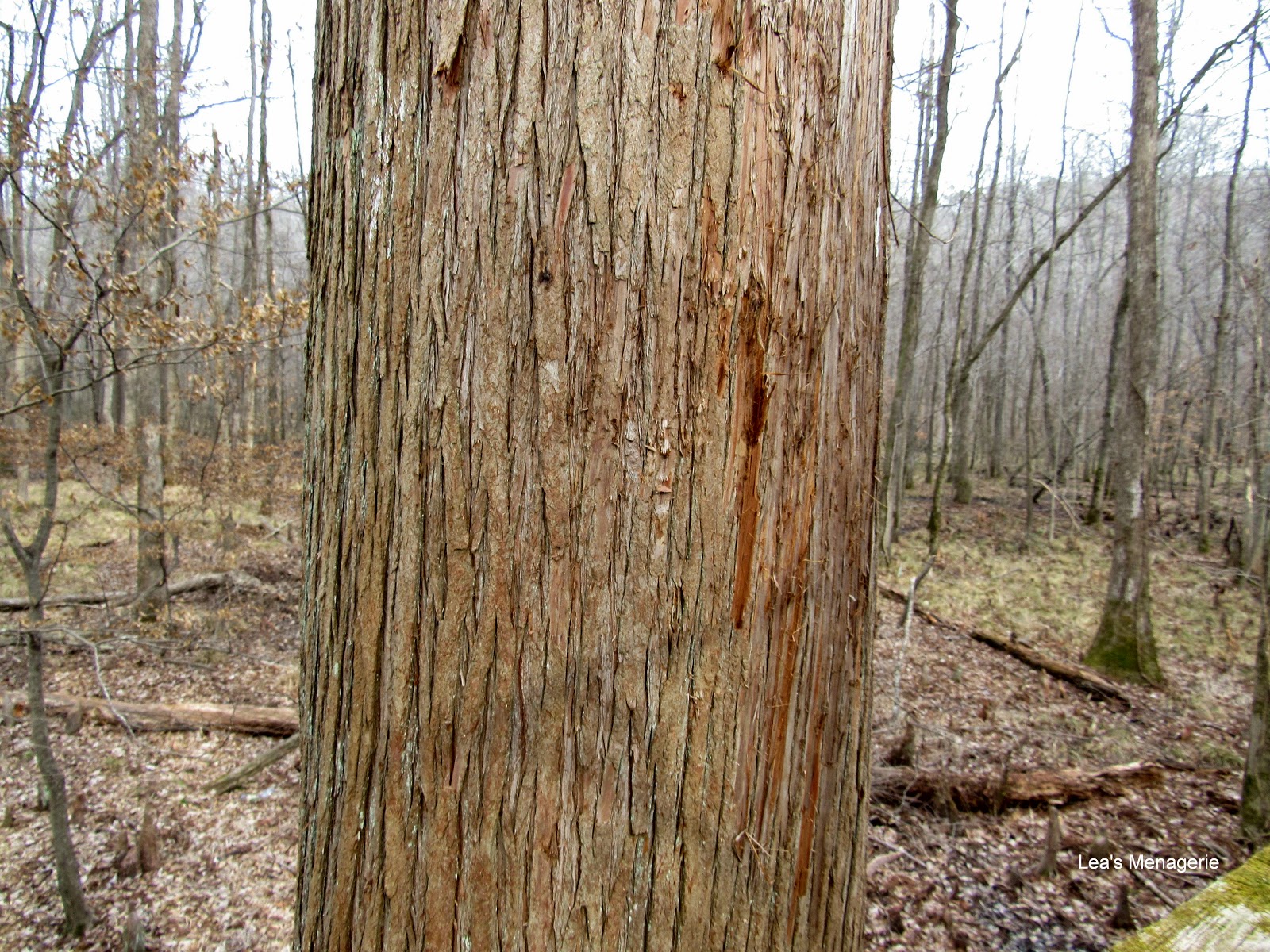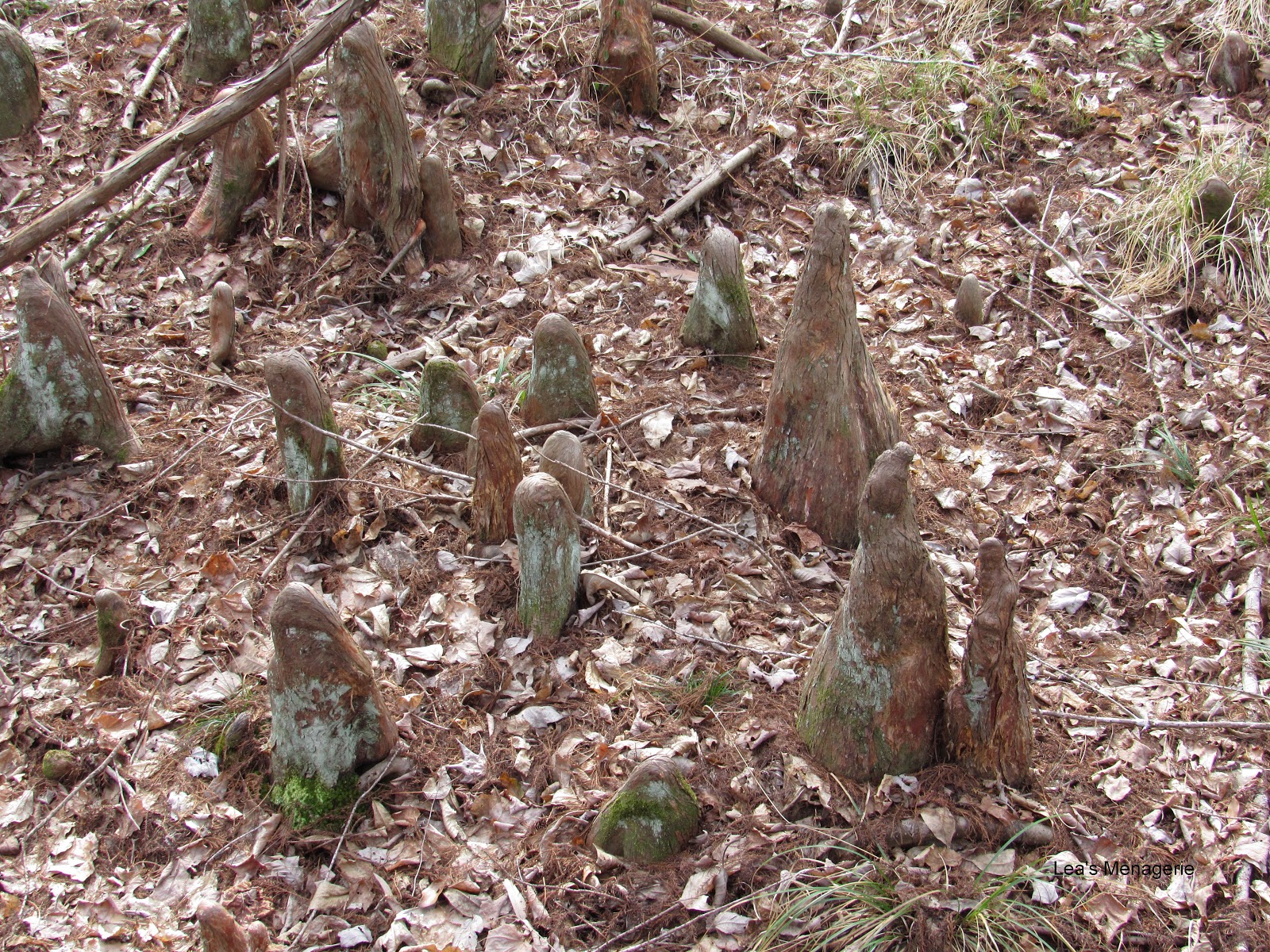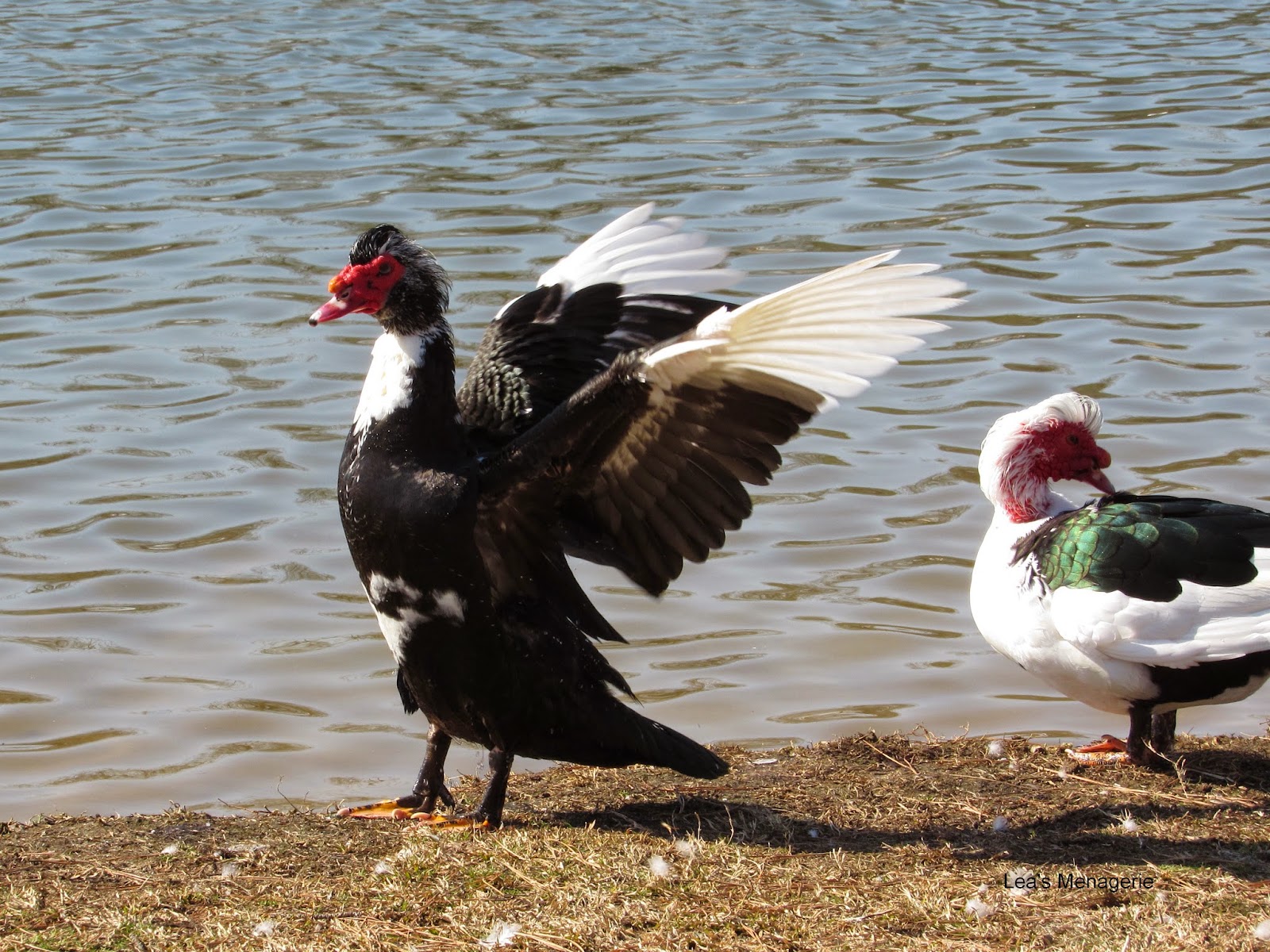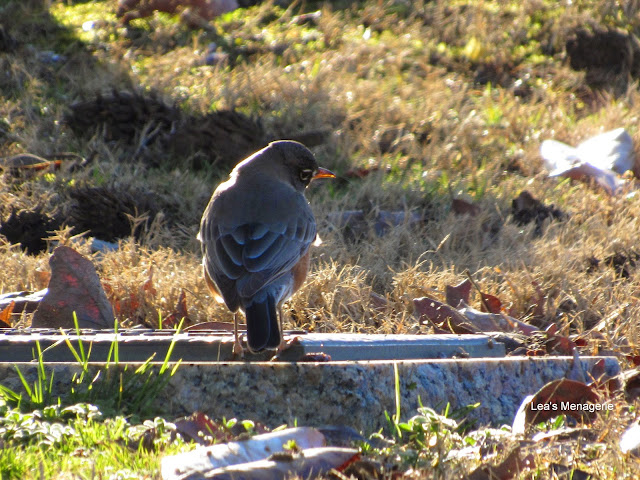Outdoor Wednesday, Wild Bird Wednesday, ABC Wednesday
Outdoor Wednesday
Big Hill Pond State Park is on Highway 57 between Ramer and Pocahontas, Tennessee, USA. When my husband and I were there (January 29th) the weather was pleasantly cool with partly cloudy skies.
The trail we chose to walk wound around and down a steep hill. Actually we went down several steep hills! (And, of course, we had to hike back up them, too).
We saw lots of ferns growing between the rocks, mushrooms on fallen trees, and patches of moss all along the way.
After about 20 minutes we came to the boardwalk that stretches eight-tenths of a mile across Dismal Swamp. We walked across and then turned back the way we came. Next time we will walk the other end of the trail. (Both ends of the trail come together at the same trailhead where visitors park their cars).
 |
| Bald Cypress, Taxodium distichum |
Many of the trees growing in the swamp are Bald Cypress. They can be identified by their rough exfoliating bark and knobby 'knees.' In the Autumn their leaves turn golden orange before they fall.
 |
| Cypress knees (Cypress tree roots) |
Cypress trees survive the soggy wet conditions by growing some of their roots aboveground. These roots are called knees. I was startled to see that some of them seem to have faces!
Wild Bird Wednesday
 |
| White-Throated Sparrow, Big Hill Pond State Park, January 29, 2015 |
The White-Throated Sparrow is a Winter visitor across the southeastern United States. It will return to Canada or the extreme northern US to raise its young. My bird book tells me that their song sounds like they are saying 'Sweet Sweet Canada, Canada, Canada.' Isn't it interesting how birds can fluff up their feathers to conserve body heat?
ABC Wednesday
D is for Deer
 |
| White-Tailed Deer, Big Hill Pond State Park, January 29, 2015 |
As we were leaving the park, we saw a half-dozen deer. This one stood her ground while the others bounded off. Then, quick as a flash, she was gone, too!
It was an exhilarating day! My latest blood tests show that my Leukemia is still in remission (Praise God!), but my red blood count is still too low (anemia). I feel well and have a good appetite. The walk at Big Hill Pond State Park was the most strenuous walking that I have been able to do. Going down the trail was just a matter of being careful not to slip and fall. Hiking back uphill was the challenging part!
Have a wonderful day!
For more outdoor photos, visit A Southern Daydreamer:
Click Here!
For more bird photos, visit Stewart for Wild Bird Wednesday:
Click Here!
For more photos featuring the letter D, visit ABC Wednesday:
Click Here!












































